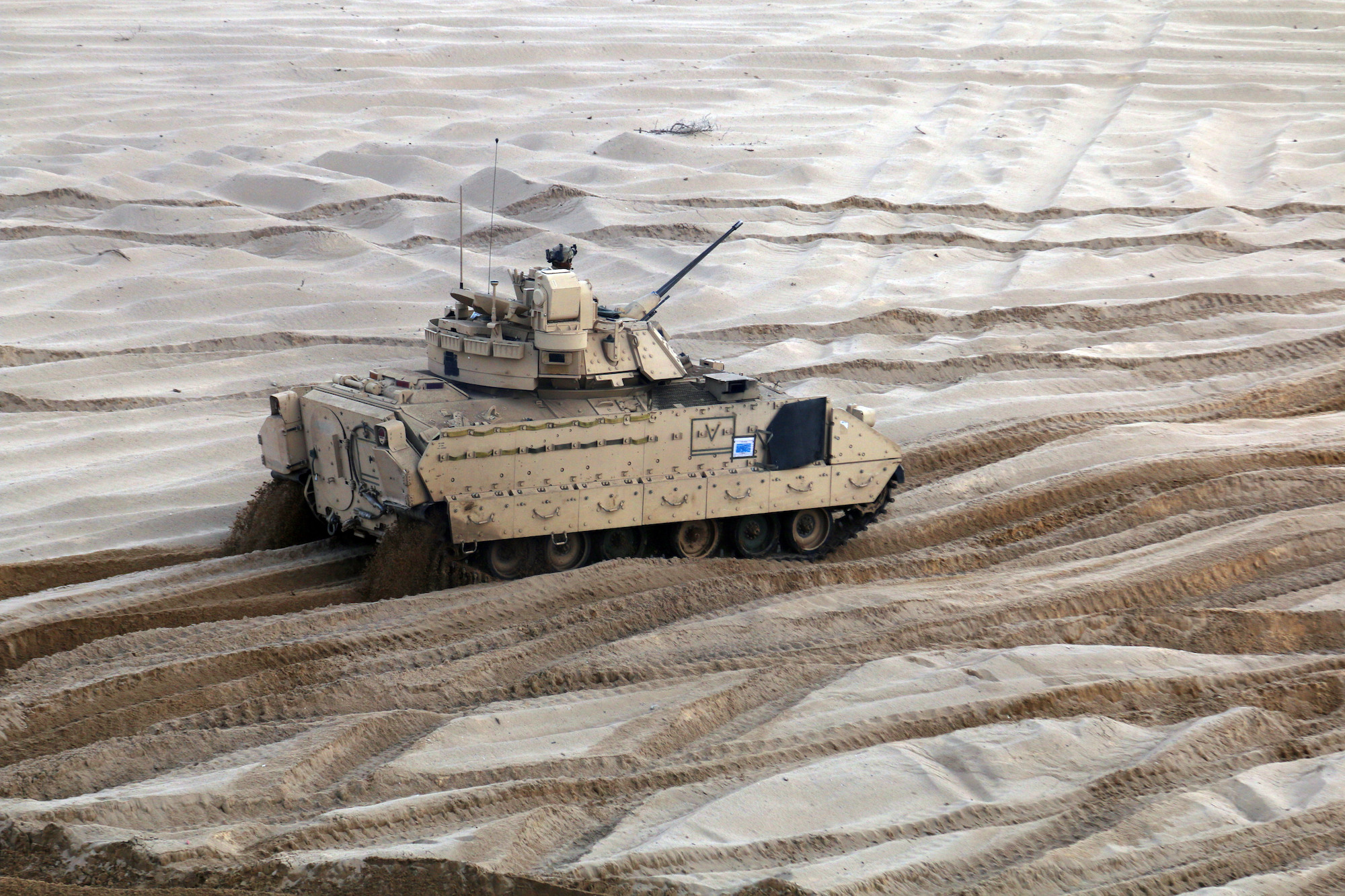

On July 1, the US Army announced it was opening up the competition to design a replacement for its venerable Bradley Infantry Fighting Vehicle. The Bradley is a small troop transport dressed up as a tank, and it’s built for battle. Replacing the Bradley with a new vehicle means repeating what worked, while adopting new technology and new tools to fight battles deep into the 21st century.
To find its new Bradley, the Army is looking for an Optionally Manned Fighting Vehicle (OMFV). The request for proposal states that the new vehicle will (like the Bradley Infantry Fighting Vehicle it’s replacing), be “tasked to maneuver through the enemy’s security zone as part of a combined arms team for the purpose of creating an advantageous position, relative to the enemy, and providing protection and direct fire lethality while manned or remotely operated.”
In other words, the OMFV will drive through breaks in enemy positions, move alongside other vehicles and soldiers, and then attack the enemy where their defenses are weak. What is new about the OMFV, relative to the Bradley and every other big ground vehicle the Army has fielded before, is that it will have the ability to fight this kind of attack while being remotely piloted.
“In the close fight,” the request continues, “the OMFV enables the ability of dismounted elements to maneuver by detecting and destroying targets at a range beyond the enemy’s capability.” By “dismounted elements,” the RFP means “infantry,” or soldiers fighting on foot.
To understand what the OMFV will do differently, it helps to understand the vehicle it is designed to replace.
The Bradley
The existing Bradley isn’t a tank, though it’d be easy to confuse it for one at first glance. With sloped armor, treads, and a turret sporting a big gun, the Bradley is certainly tank-like, though its 25mm gun is much smaller than the 120mm cannon carried by an Abrams tank. The Bradley is also almost two feet taller than an Abrams, a concession to the 6 or 7 passengers it has to fit inside.
The Bradley’s design dates back to the middle of the Cold War, as the Army was looking to move beyond the armored transport that carried soldiers into battle. As envisioned, the Bradley was both a form of transportation and a threat in its own right, with its main gun and anti-tank missiles allowing the vehicle to take out enemy vehicles and support the dismounted soldiers in combat. While the Bradley never saw use in any massive European land battles against the USSR, as its Cold War designers planned for, it has still seen three decades of combat. The Bradley has been a mainstay of US interventions from the Gulf War through Iraq and Afghanistan.
Failed replacements
The Army has previously tried twice to develop a replacement for the Bradley, while continuing to upgrade and maintain existing vehicles. These two programs were known as the Future Combat System, canceled in 2009, and the Ground Combat Vehicle, canceled in 2014. The Future Combat System was designed to be a family of deadly, lightweight vehicles that could use advanced sensors to see enemies first, and then move out of the way of return fire, allowing for lighter armor and faster speeds. It was canceled for cost overruns before production had even begun.
The Ground Combat Vehicle program was also canceled for trying to make one vehicle tackle too many roles at once, all while incorporating technology that was not yet ready for the field. As the Congressional Research Service notes, the Ground Combat Vehicle “relied on too many immature technologies, had too many performance requirements, and was required by Army leadership to have too many capabilities to make it affordable.”
The Optionally Manned Fighting Vehicle
The Army is hoping that the third time replacing the Bradley is the one that sticks. The OMFV program began with fits and starts in 2019. The first go failed in January 2020 after one contractor designing a prototype withdrew, and another failed to deliver a working prototype, and the Army did not want to be stuck with just the third remaining design by default. The Army launched the most recent iteration of the OMFV program in February 2020, and the latest proposal opens up this existing program to more companies, with the goal of bringing in new teams and new ideas.
While the previous attempts at Bradley replacements failed because the vehicle itself was built around too many undeveloped technologies, the OMFV is designed for modularity, allowing it to incorporate new tech as it is fielded. It’s also designed to work in a sensor-rich environment, with the proposal saying that the vehicle will be “rapidly generating, receiving, and passing information to dismounted elements, other vehicles, and command nodes,” like the TITAN.
This information-sharing will help vehicle commanders find appropriate targets for their weapons, with the OMFV “providing target acquisition data, shared situational understanding, and the lethal effects required to protect” and guide the soldiers on foot. Remotely piloted, the OMFV could provide cover fire after driving into position, with its crew, in the battlefield on foot, taking cover out of the line of sight of the enemy.
